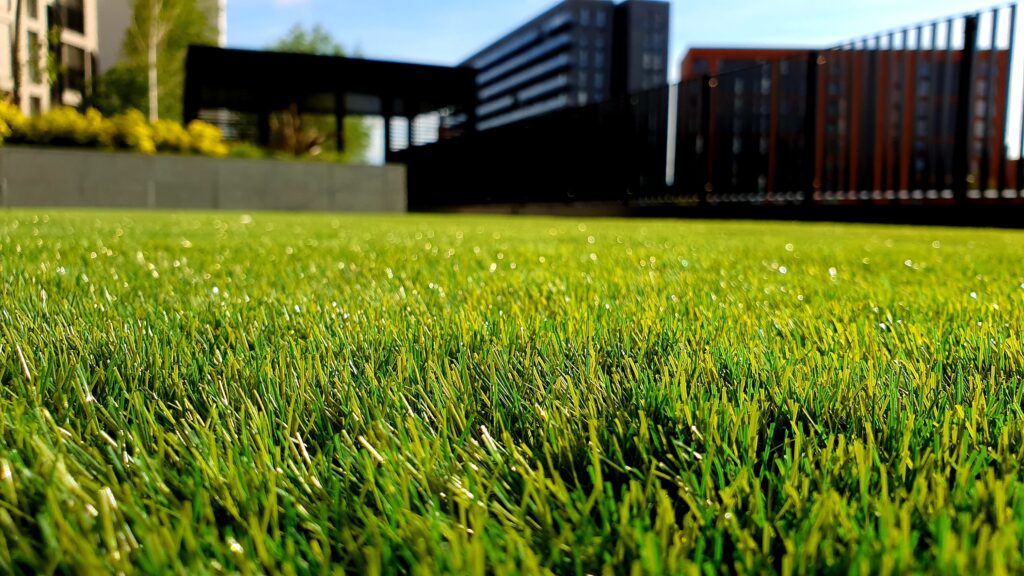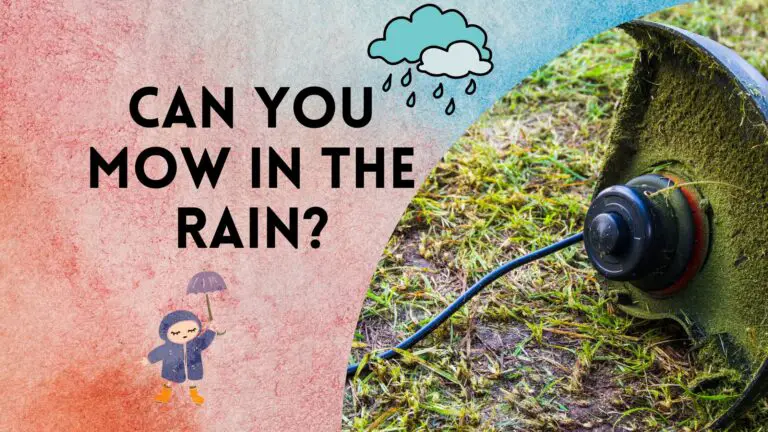What to Do After Aerating Your Lawn?
Having a healthy lawn is important in keeping your home looking its best. Aerate your lawn, and you’re ready to get the most out of your grass. But what comes next?
Aeration helps maximize nutrient and water absorption, as well as reduce the compaction of the soil. After you have aerated your lawn, there are a few more steps to take in order to ensure that it stays healthy and looks great.

Tips on What to Do After Aerating Your Lawn
It’s important to understand the next steps in order to get the most out of the process. Here are some tips on what to do after aerating your lawn so that you can have a lush, green outdoor space. With these simple steps, you’ll be well on your way to having an enviable yard!
1. Allow Soil Plugs to Break Down Naturally
Aerating your lawn is one of the best ways to improve its quality and ensure a healthy, lush landscape. After aerating, it’s important to know what you should do next. One of the most common questions is what to do with the soil plugs left after aeration. The answer: Allow them to break down naturally!
Aeration can help reduce compaction in your lawn’s soil and promote better airflow and nutrient absorption. It also helps water penetrate deeper into the ground more efficiently.
While some people may choose to rake up and remove all of the soil plugs left behind, this isn’t necessary – leaving them on your lawn will help provide additional benefits for your grass over time!
Soil plugs are full of beneficial nutrients such as phosphorous or nitrogen, which can help promote healthier grass growth. The soil plugs also help to break down and become part of the organic matter in your soil, which can help improve its quality over time.
2. Overseed with New Grass
Overseeding your lawn is an important step in keeping it healthy and green. After aerating your lawn to remove thatch, plugs of soil, and grass, you should overseed the area with new grass seeds. Doing so will ensure that the empty spaces left behind by the aeration are filled with healthier and more resilient grass.
The process of overseeding requires a lot of preparation. You’ll need to purchase grass seed specific to your climate, fertilizer, topsoil or compost, a rake or spreader, and straw mulch for protection from bird predators and wind erosion.
The first step is to rake the surface lightly before spreading the seed mixture evenly across your lawn at about 1/4 inch depth. Afterward, you should apply water gently but consistently until germination occurs.
3. Water Your Lawn
When it comes to lawn care, aerating is just the beginning. After aeration, it’s important to water your lawn correctly to let the newly aerated soil absorb the necessary nutrients and reach its full potential. To ensure that your lawn receives the right amount of water after aeration, there are a few steps you should take.
The first step is to identify how much water your lawn needs based on your grass type. In general, cool-season grasses need about one inch of water per week, warm-season grasses need around 1.5 inches weekly during active growth phases, and only half an inch when dormant.
Next, ensure that you’re distributing this water evenly across your lawn by using a steady stream from a hose or sprinkler system that can be adjusted for varying amounts of coverage with each application. It’s also a good idea to measure the water you’re applying so that you can keep track of your lawn’s needs.
4. Apply Fertilizer to Your Lawn
Applying fertilizer is one of the best ways to ensure your lawn gets the nourishment it needs. Fertilizer helps grass grow solid roots and keeps weeds away as well. Additionally, applying fertilizer helps your soil retain more water which can result in an improved overall look.
When choosing a fertilizer, you’ll want to look for ones specifically designed for grass growth and weed control. The type of fertilizer will depend on the grass you have in your yard – so be sure to get advice from a local garden center or lawn care expert if you’re unsure what type would be best for you.
5. Apply a Herbicide
Applying a herbicide is one of the most important steps in maintaining an attractive and healthy lawn. Herbicides eliminate unwanted weeds, pests, and other invasive plants that can damage your lawn’s overall appearance. To apply a herbicide properly, you must select the right product for your particular situation.
Choose a pre-emergent product if you want to prevent weed seeds from germinating or an active ingredient if you want to control existing weeds. You should also consider factors such as temperature, soil conditions, and season when selecting a herbicide for your lawn.
Make sure to read the directions on the package before applying it, and wear protective clothing such as gloves, long pants, and long sleeves. Be sure to water your lawn after applying the herbicide, so it has time to thoroughly absorb the soil.
6. Allow Your Lawn to Rest
After the hard work of aerating your lawn, it’s time for a break. Aeration is important for keeping your grass healthy as it helps loosen compacted soil, promotes root growth, and encourages water absorption and nutrients.
But after aerating comes the important period of allowing your lawn to rest and recuperate from the stress of all that activity.
Immediately after aeration, you will want to apply some fertilizer and overseed any areas that need additional grass or grass variety. Watering should be done regularly for at least two weeks after aeration so the lawn can fully recover from this stressful process.
Once complete recovery has taken place, your lawn will be able to handle regular maintenance like mowing and trimming again without any issues.
Aerating Your Lawn at Specific Times of the Year
Aerating your lawn at specific times of the year is important to keep it healthy. Aeration helps to reduce soil compaction, improves drainage and oxygen penetration, and encourages deeper root growth. It can be done in the springtime and fall for maximum benefit.
What to Do After Aerating a Lawn in Spring
In the springtime, aerate when temperatures are warm but before grasses begin actively growing. This will create better conditions for seed germination as well as give roots more room to grow deep into the ground. You should also make sure that there is enough moisture in the soil so that it doesn’t dry out during this process.
Aerating your lawn in the spring is a great way to improve its health and growth. It helps break up compacted soil, allowing air, water, and nutrients to easily reach the grassroots.
Unfortunately, aerating isn’t enough on its own; there are specific steps you must take afterward to get the most out of this lawn maintenance practice. Here are some tips to help you properly care for your lawn after aerating it in the springtime.
First, add fertilizer or lime to your soil as necessary. If a soil test reveals that it lacks nutrients, adding fertilizer can replenish those levels and help ensure healthy grass growth.
Lime can also be used if your soil has a high acidity level; it balances pH levels and provides essential calcium for plants. A soil test can help determine if your soil needs lime or fertilizer.
Secondly, aerating will expose the roots of your grass to air and water, so you mustn’t mow right after aeration. Instead, wait two to three days to allow the soil to settle before mowing. This will help your grass grow healthier roots and keep the soil from compressing.
What to Do After Aerating a Lawn in Fall
In the fall, aerate after grass has gone dormant but before freezing temperatures hit. This will allow for maximum root growth and allow you to get rid of thatch. However, if the soil is still too wet from summer rains or it’s been raining recently, don’t aerate in the fall.
To get the most out of aeration, there are important steps you should take afterward. From fertilizing and overseeding your lawn to assessing the aeration results, here’s what you need to know about caring for your lawn after aerating in the fall.
After aerating your lawn, it’s important to fertilize it. This will help replenish the nutrients lost during aeration and help nourish the soil over winter to prepare for spring growth.
Additionally, if you have patches or bare spots in your yard due to heavy traffic or drought conditions, consider overseeding with cool-season grass seed varieties at this time.
Frequently Asked Questions
What to Do with the Plugs – Should I Pick Up Plugs After Aerating?
The answer depends on your soil type and the desired outcome for your lawn.
For clay-heavy soils, it’s best to pick up all plugs after aerating. This will allow for better water infiltration and help reduce compaction. Watering heavily after picking up plugs may also be beneficial, as this will further loosen compacted soil particles. To make cleanup easier, consider using a plug catcher attachment on your aerator when first starting out.
For sandy soils, leaving plugs in place can be beneficial – they provide additional organic matter which helps promote microbial activity and improve root growth over time.
Can You Walk On Lawn After Aeration?
Simply put, walking on an aerated lawn should be avoided until the soil has had ample time to settle down. Depending on the condition of your soil, that could mean anywhere from one day up to several weeks or more.
Since walking can prevent the new plugs from settling into the ground, it’s best practice to wait before enjoying activities such as mowing and playing in the backyard again.
What Should I Put On My Lawn After Aerating?
Here are some of the most important things you should put on your lawn after aerating.
Fertilizer is key for a healthy lawn, so be sure to apply fertilizer after aeration. Choose one specifically designed for residential turf, as this will provide nutrients for growth and sustainability.
A slow-release fertilizer is ideal as it won’t burn or shock the grass with an overload of nutrients.
Finally, seed any bare spots in the lawn with grass seed to help create uniformity across your yard.







